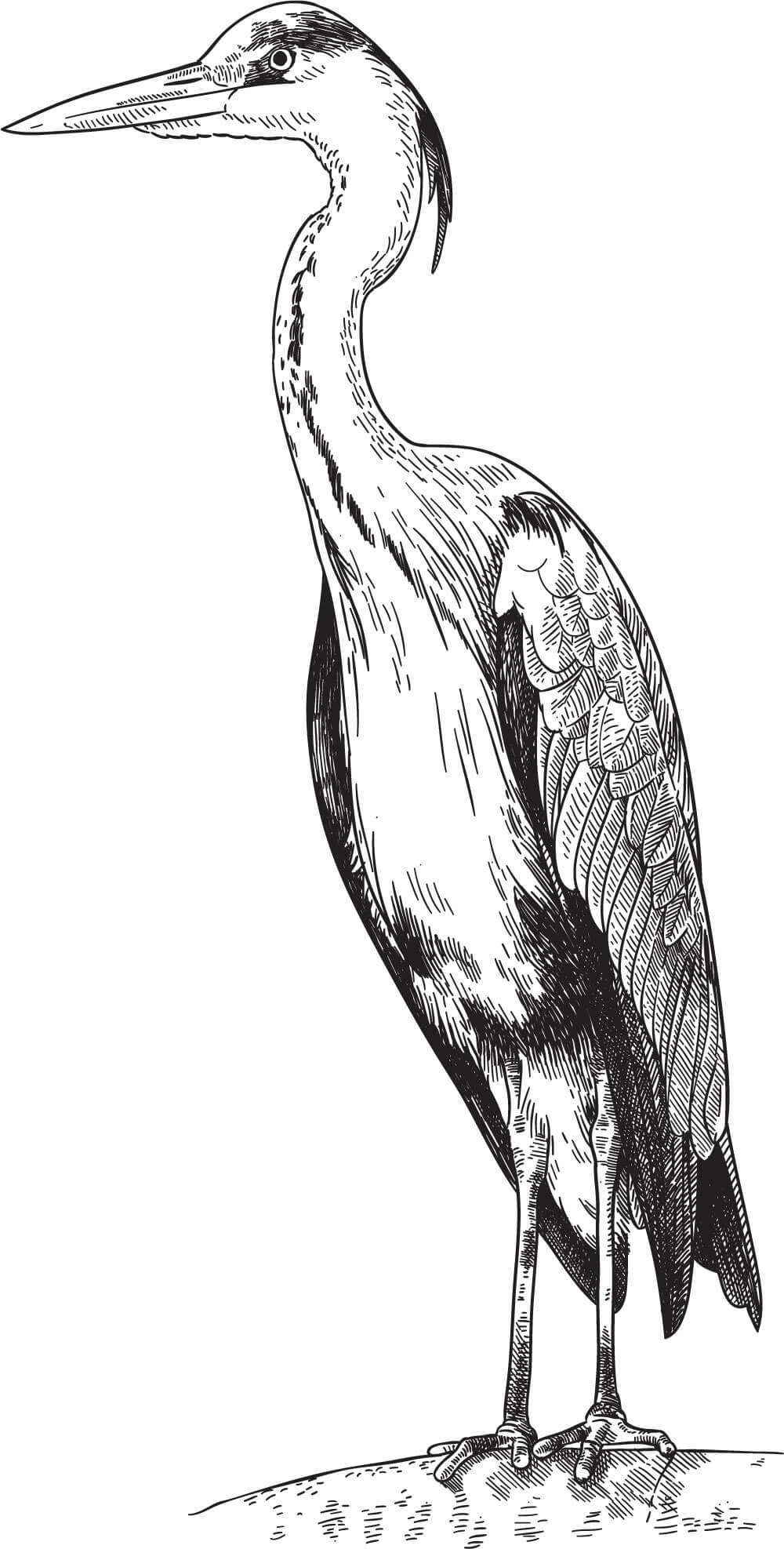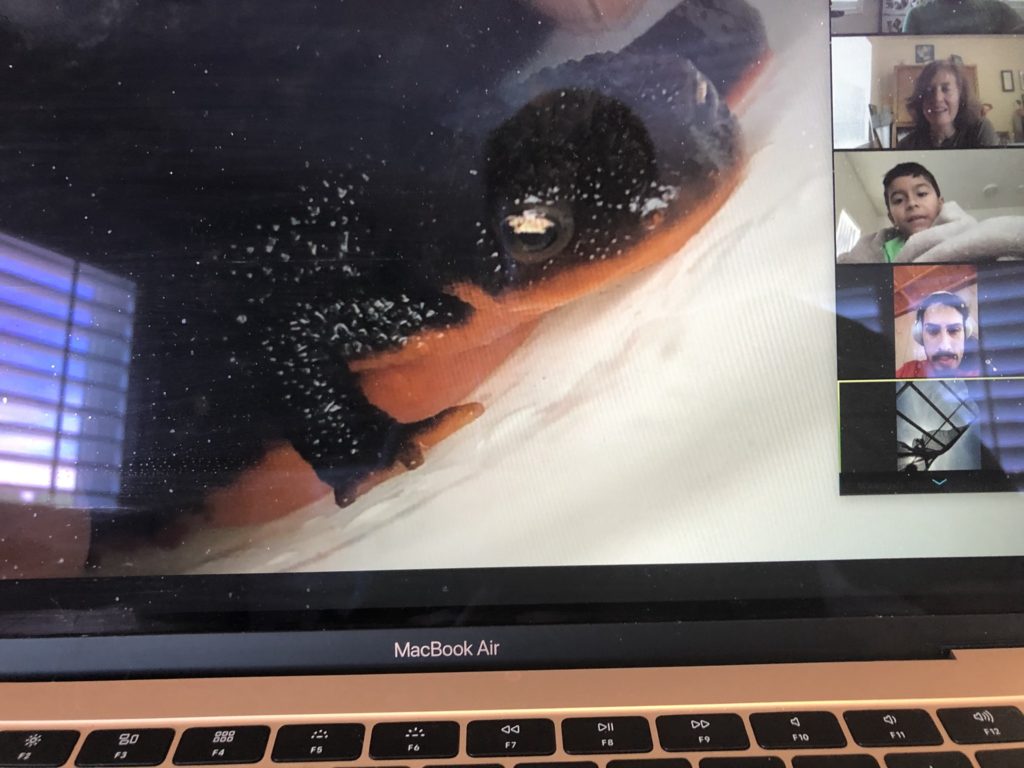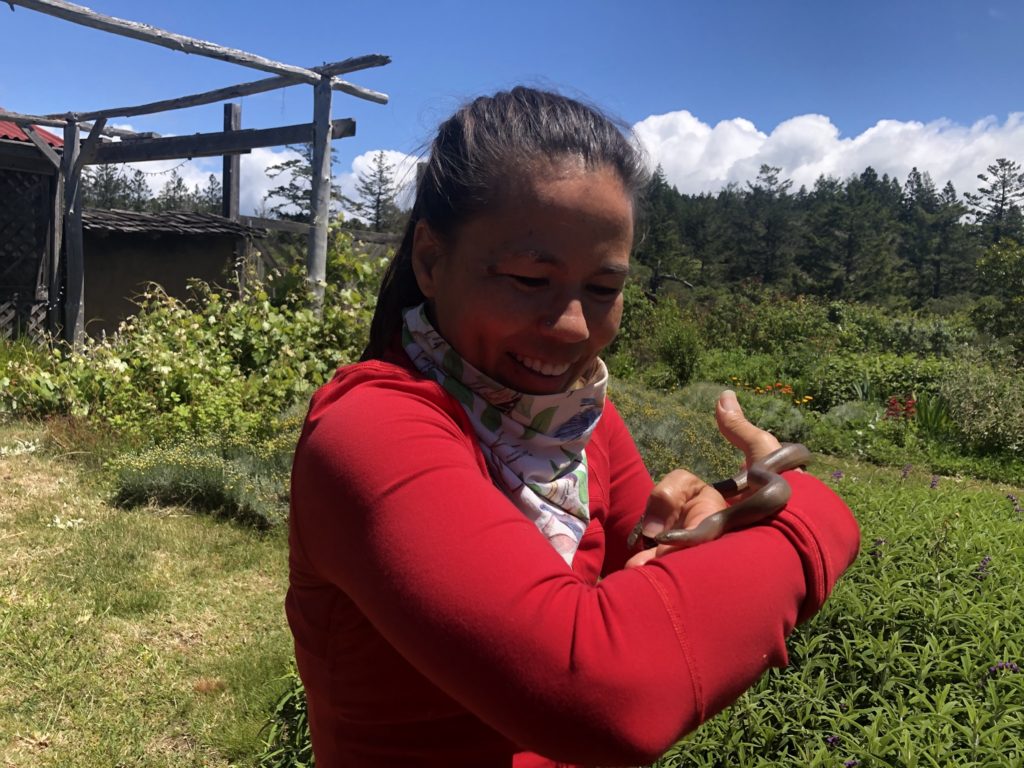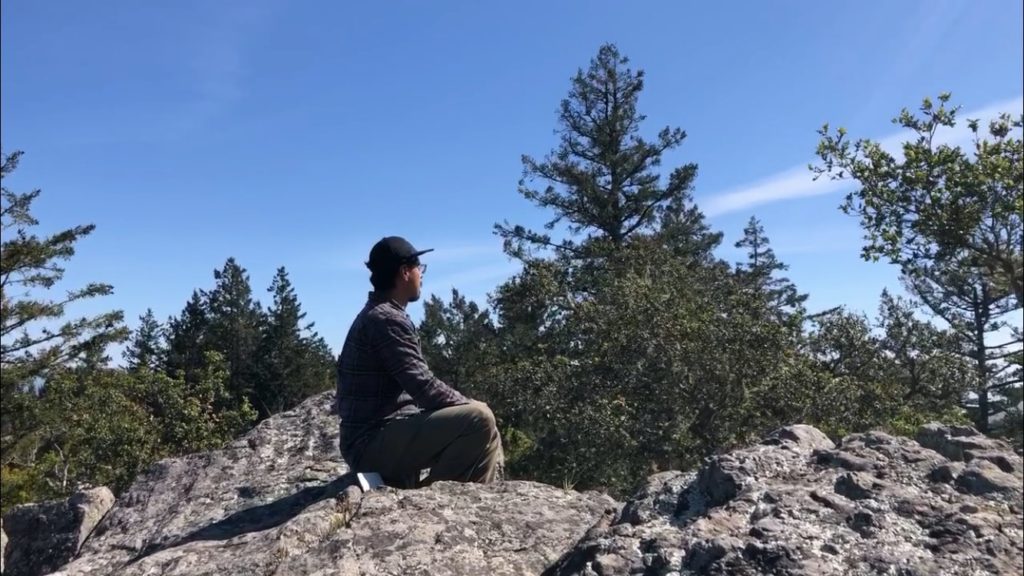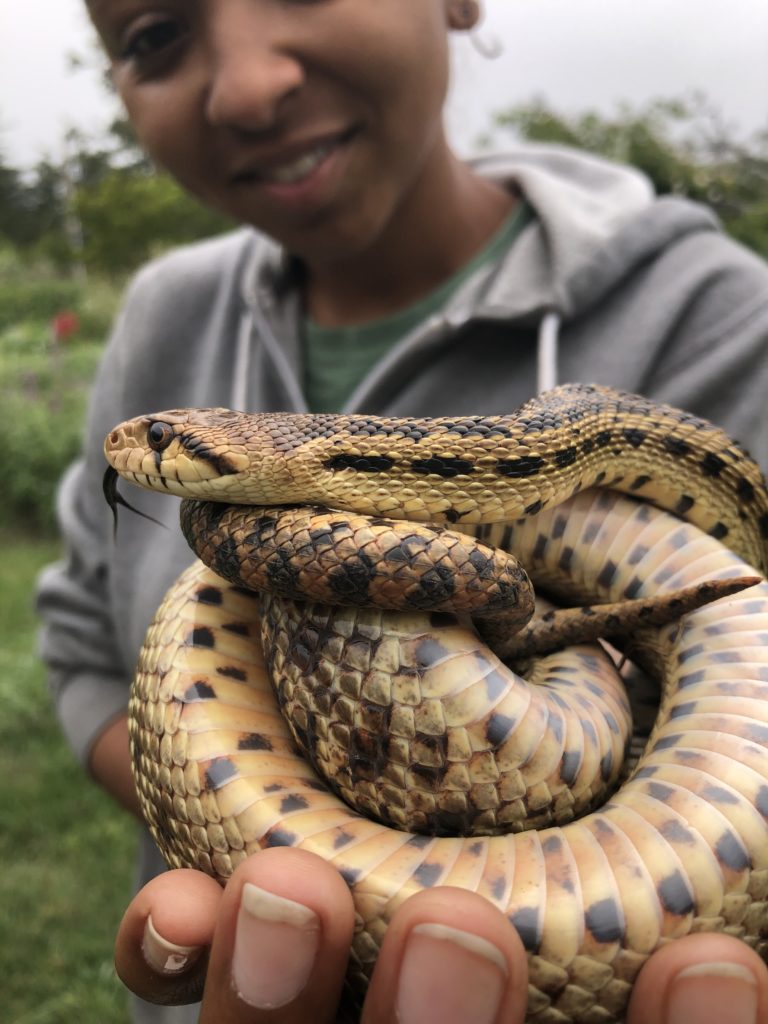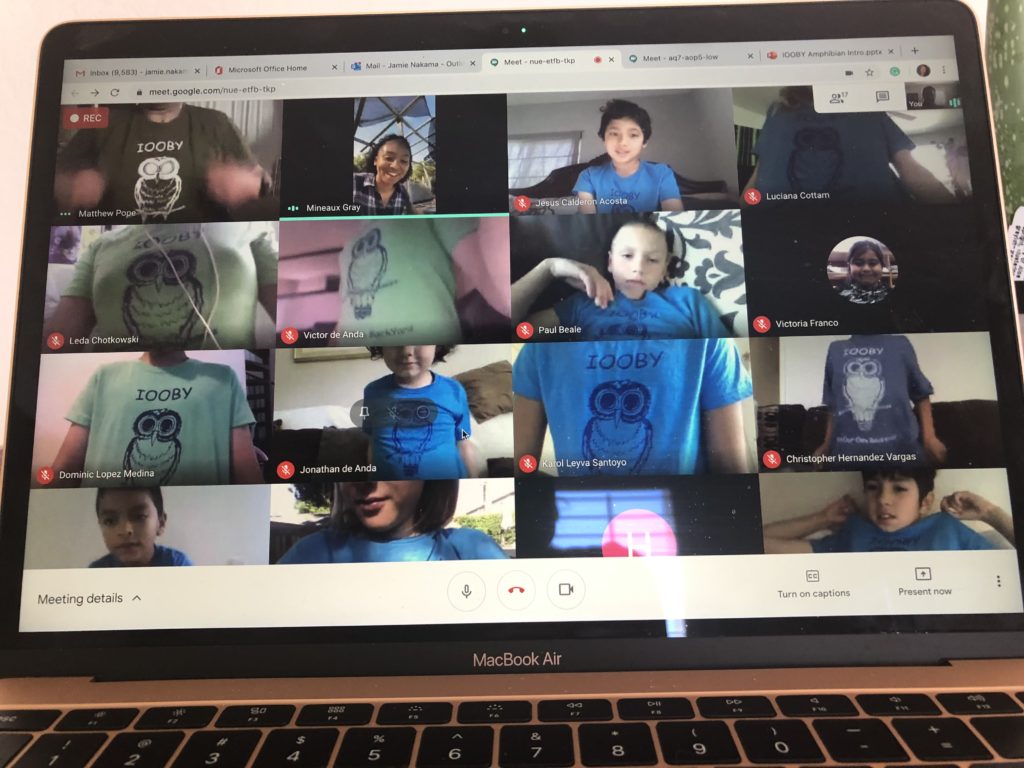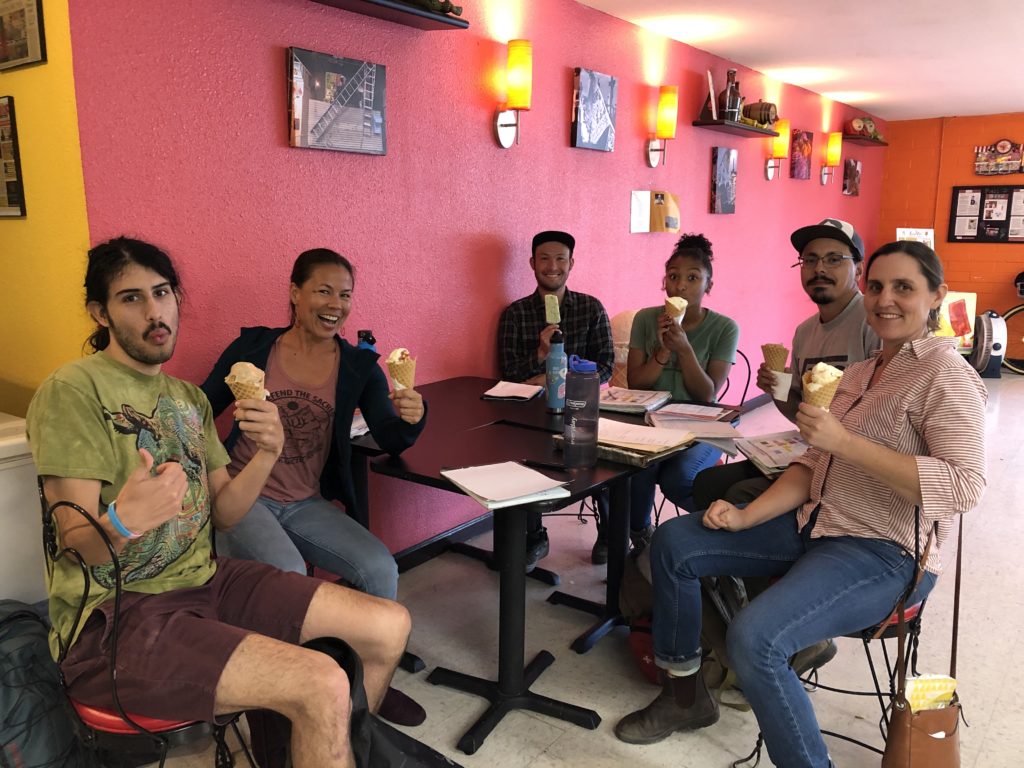IOOBY Goes Digital: How our Youth Team Brought the Joy, Wonder, and Awe of Nature to the Screen
Category: Blog, Community Resilience, Family Friendly, Hidden Nature, IOOBY, Rooting Youth in Nature, Sit Spot, Youth Programs
By LandPaths Staff
June 11, 2020
When schools across Sonoma County closed down for in-person learning in March due to the coronavirus, teachers, students, and parents were suddenly faced with a series of unknowns.
What would distance learning look like? How would dynamic, classroom lessons translate to the flatness of the screen? LandPaths’ environmental education program In Our Own Backyard (IOOBY) was faced with a similar dilemma. For more than 20 years, IOOBY has gotten thousands of local elementary school children, mainly from Title I schools where a high percentage of students are from low-income families, outside to explore, experience, learn, and connect with our beautiful nearby nature.
So what happens when a program that’s entirely based on getting kids out on the land is forced to go entirely digital? “First, we asked the teachers what they needed and what LandPaths could do to support their situation,” says Youth Initiative Manager Jamie Nakama. “We started with lessons on video, available through YouTube.”
Impressively, the team of six immediately jumped into an unprecedented experiment with ways to keep students connected to our local nature and science learning via technology. Funding support from The Partnership, a project of Measure O, helped make this work possible.
Eventually, as the shelter-in-place order stretched from weeks into months, teachers realized they could use even more support and 2nd and 3rd grade teachers requested longer and regular weekly sessions. The team at LandPaths jumped to work creating multimedia, deeply engaging, Next Generation Science Standard- based curriculum to be taught over Zoom.
“We pivoted so quickly,” says Jamie. We didn’t simply film what we normally do on an IOOBY field trip. When we’re exploring nature with the students in the outdoors, it is a full sensory-based experience with nature leading the way. We thought about what aspect of our outdoor field trips can be brought to them on a screen that would still be engaging and get them excited to keep exploring and learning more…we realized it came down to interacting with live creatures! In order to create fun and engaging virtual lessons, I knew we had to utilize a multimedia approach that encouraged a high level of student interaction and discussion. We needed to make sure this did not turn into a “lecture” or “webinar.” The lessons needed to be visually captivating, student-centered, and fully interactive.”
“It worked out like this: A couple of staff members would live stream in a safe, socially distanced way from one of LandPaths’ preserves while Jamie worked the back-end of Zoom from her home. Jamie and her team orchestrated the lessons to move seamlessly in between live footage of them searching for live creatures in the field, to pre-recorded videos of the animals filmed up-close, along with a powerpoint with engaging photos and text which included important questions that prompted student inquiry and interaction.
Soon, more teachers asked for the extended Zoom IOOBY lessons. Some even began developing their weekly lessons and critical thinking questions around them.
“The online lessons had great lead-in and follow-up questions that were grade-level appropriate,” says Anne West, a teacher at Luther Burbank Elementary School. “The digital lessons were intriguing because Jessica, Mineaux, Tomio, Luis, and Elias were all out in the field, both with live and recorded videos, of the animals we were observing. You really rose to the occasion to meet our distance learning needs this year!”
Other teachers remarked that student engagement increased. Students who hadn’t logged into a Zoom class once in the semester, were suddenly showing up to class.
“I appreciate the positivity and support from IOOBY,” says Christa Knapp, a third grade teacher at Lincoln Elementary, a Title I school in Santa Rosa. “It was very engaging to have the live animals, which increased student participation.”
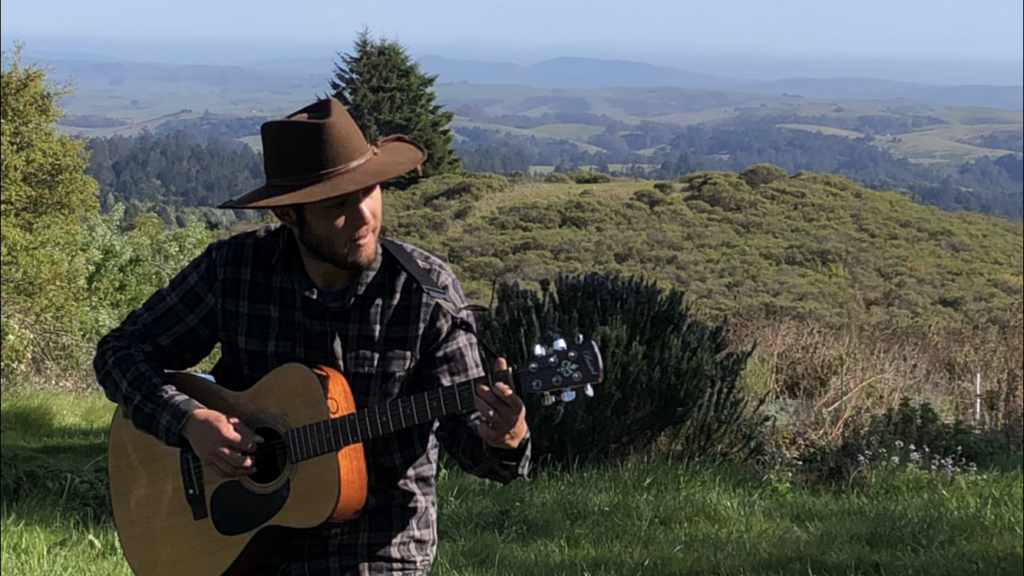
Parents also started getting involved, sitting in on the Zoom lessons with their children and sharing lizards and exoskeletons that they found in the backyard!
IOOBY, by design, is an immersive nature-based experience geared especially towards students who might not normally have access to natural spaces. For this reason, Jamie and the rest of the team were strategic about how to connect students to the natural world around them, bringing the awe and wonder alive on screen.
“This was obviously a challenge,” says Jamie. “But we did this by focusing on the amazing diversity of animals that can be found “in our own backyard” and at LandPaths’ nature preserves like Ocean Song and Bohemia Ecological Preserve, right here in Sonoma County.”
Students were introduced to amphibians, reptiles, aquatic macroinvertebrates, and arthropods with a focus on their traits, adaptations, lifecycles and ecological roles.
Mineaux Gray, an Education Field Specialist with the LandPaths, says she also learned from the experience. She became even more familiar with the critters in local ecosystems. And she had to change the way she asked questions.
“When we’re with the kids in person, we ask them to use all five of their senses,” says Mineaux. “What do they smell? What do they feel? But on video, this had to be imaginary. I’d ask them, ‘How do you think this would feel by looking at it?” So it became an exercise in imagination. It ended up being really fun and the energy was still there.”
“Like our field experiences, we aim to make sure the Zoom curriculum promoted curiosity and scientific inquiry,” adds Jamie.” Above all, we hope to inspire awe and wonder, and an appreciation for and desire to take care of the natural world.”
“We don’t want this to be the way of the world, but we have this technological adaptation at our fingertips now,” says Jamie.”If we need to supplement our outdoor lessons because of regulations with school, we are ready. We can also use these during our classroom visits. However, there is absolutely no comparison to hands-on, experiential education in nature. Connecting children to the land through real-world experiences is imperative for the health of our human communities and the land. Thus, we are going to first push to have kids outdoors. But our new virtual curriculum can be a great compliment and supplement to what we do, if we need to use it in the future.”

Partners
Thank you to the following partner for funding support.

